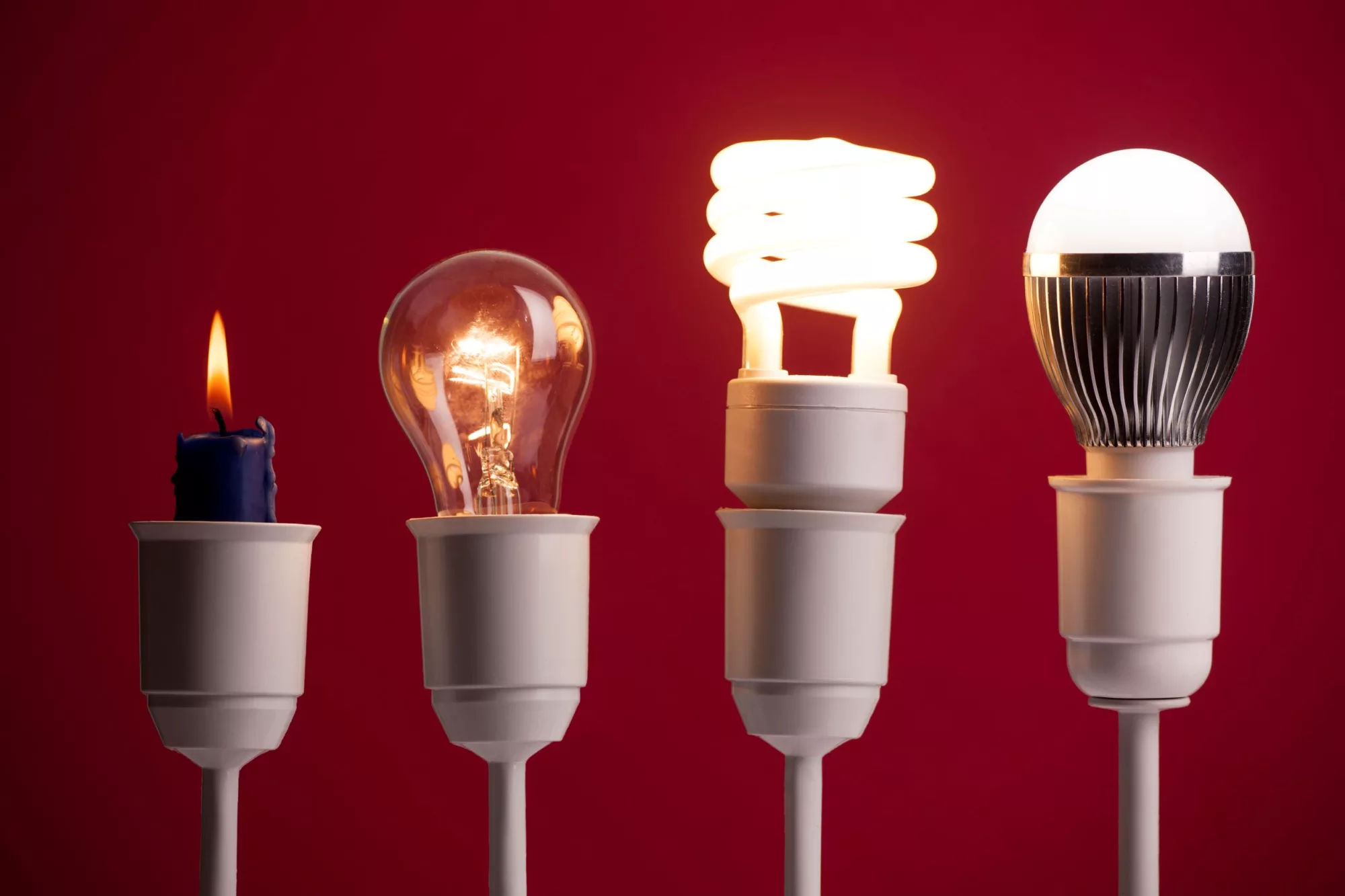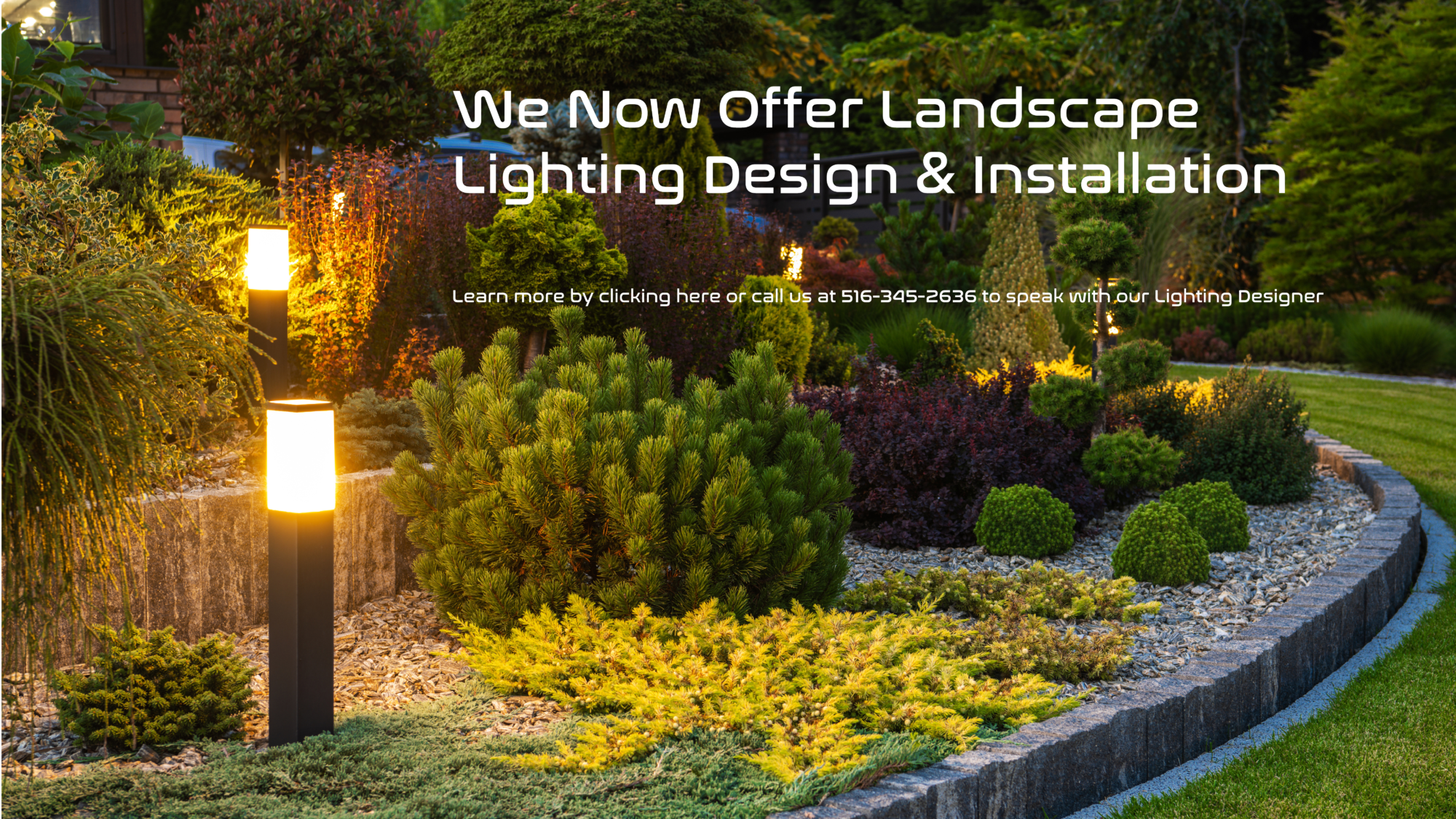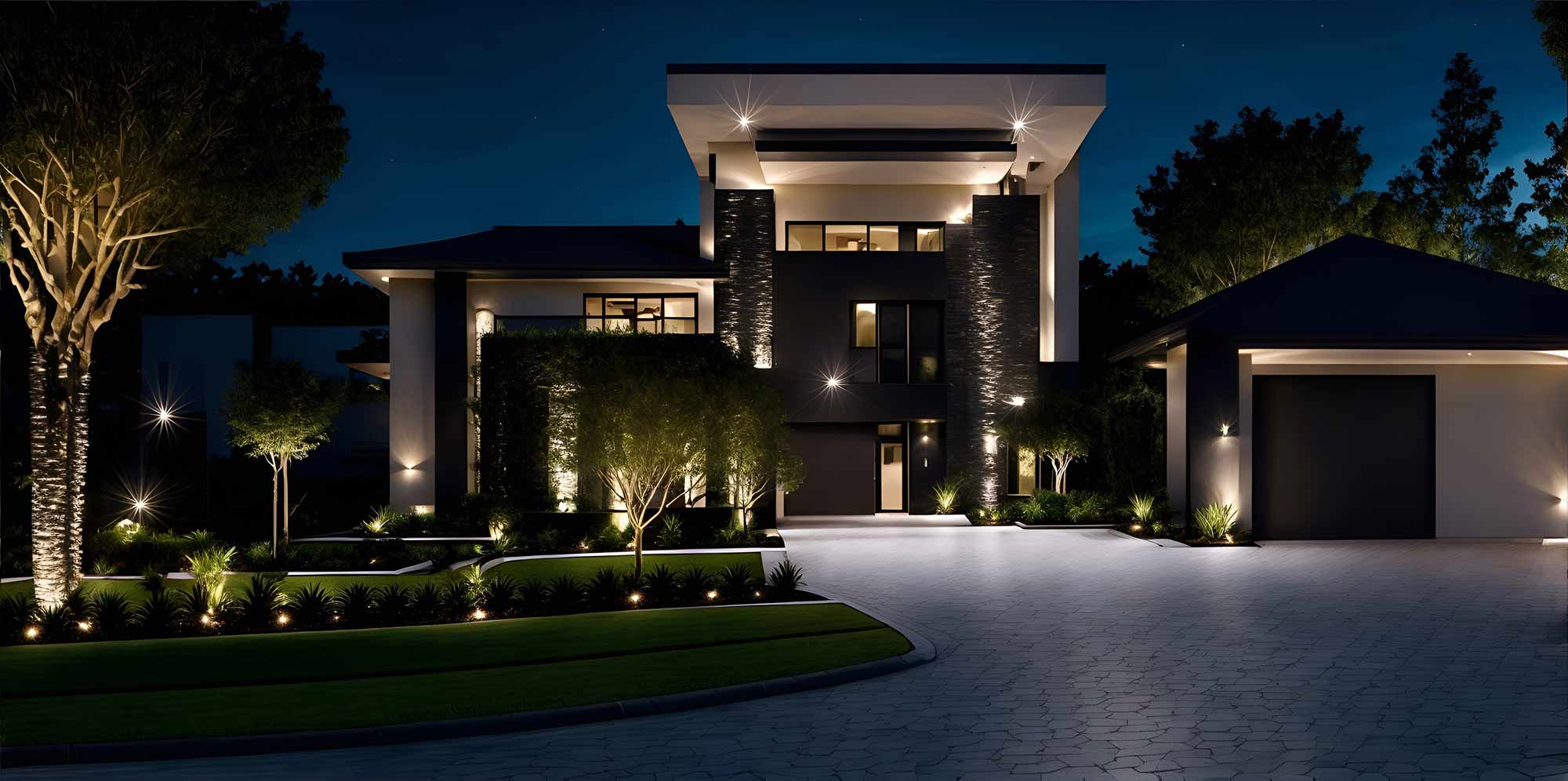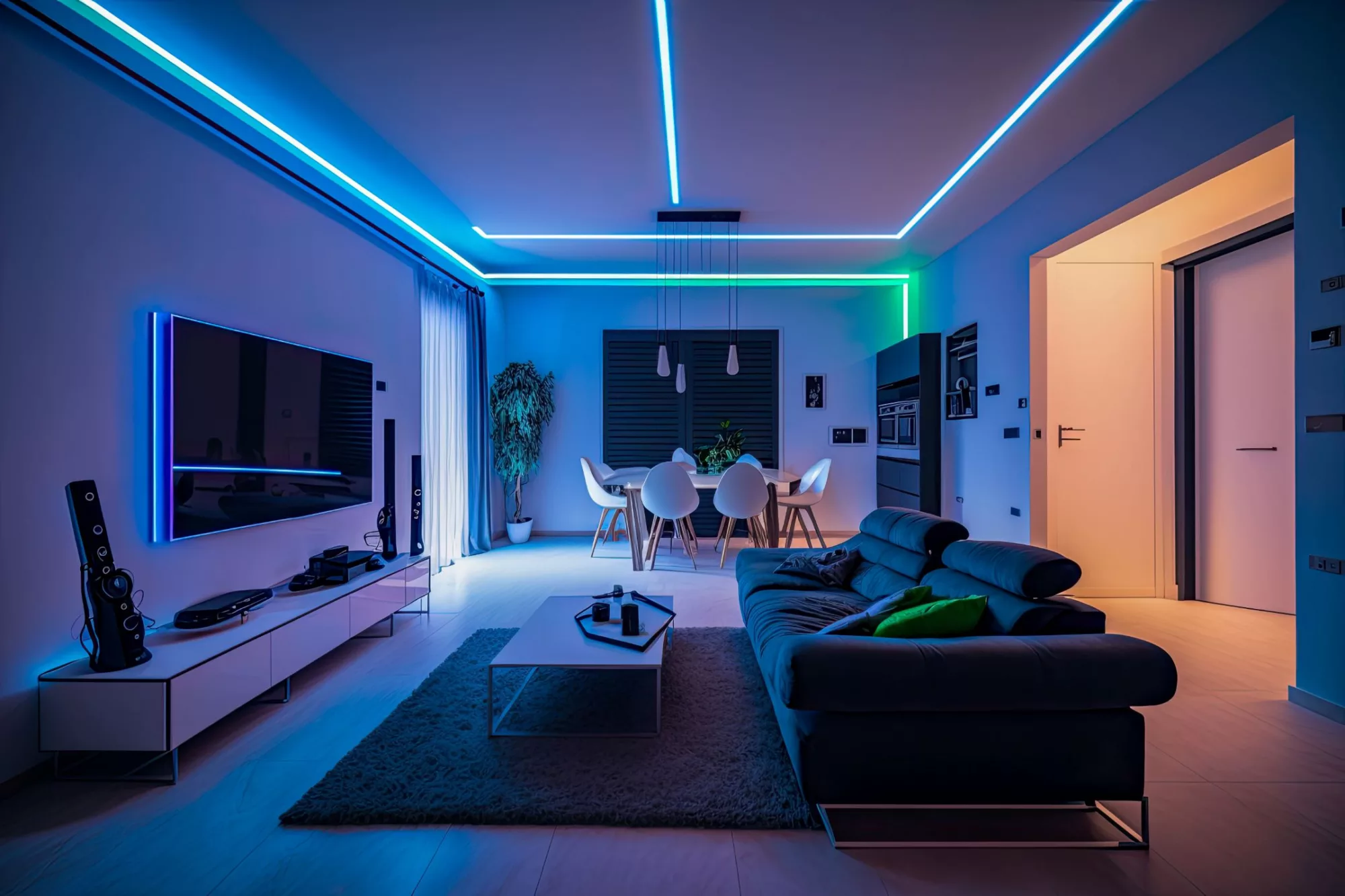Low voltage landscape lighting became prominent in the residential market during the 1950s. This period marked the beginning of its widespread adoption for home...
Since Edison invented the incandescent lamp in 1879, many improvements have been made. Lamps available on the market are always becoming either smaller or extending their life expectancy, allowing lighting designers to use them in new ways. Some of the lamp types lost their capacity to dim throughout the process. Therefore, understanding the differences between various parameters of each luminaire is crucial for proper lighting design and installation. The lamp’s efficiency is one of the crucial parameters that define its quality. The constantly rising cost of electricity and ecological awareness has redirected people’s attention to lamp efficiency giving way to an ever growing need for lighting consultants and lighting control systems. But what defines the efficiency of the lamp?
Wattage
The most common mistake when not using a lighting designer is to assume that the more wattage a lamp has, the more light will be illuminated. I have to say that this is far from the truth. For example, a 12 W CFL lamp will produce more light than a 28 W halogen lamp. So, as you see, we need to look for another parameter that affects the efficiency within our lighting design.

COLOR RENDITION INDEX (CRI)
Incandescent light is used to produce warm and natural light. But as technology evolved, the colors illuminated by the lamp have changed. The natural light CRI index is 100. All reliable manufacturers present the CRI index on their products.
COLOR TEMPERATURE
You’ve probably been in the situation where you had to buy white paint, you went to the store, and you saw not one, but at least a few shades of white. At this point, you know that the decision making process will be longer than anticipated. The same problems arise when it comes to light and deciding on a suitable lamp. I will help you a little bit with that choice. The temperature of the white color is measured in kelvins. The lower the number, the warmer light you will have. Candlelight is around 1700 K, 2700 K is sunset, and 20000 K is the artic sky, which gives you a blueish white. 4000 K is neutral white, neither described as warm or cold white. The primary purpose of artificial light is to mimic natural daylight. The preferences towards color temperature vary from state to state. In places with a warmer climate like Miami, Florida, people prefer cold lights to give a more inviting, cool, and refreshing feeling. And analogically, in states where the year is divided into four seasons, like Massachusetts, Vermont, New York, and New Jersey, people prefer warmer lights to feel cozier and warmer. Of course, the choice of color temperature depends on personal preferences, cultural expectations, etc. Your lighting consultant will help you choose the perfect temperature for your lighting design.
LUMENS
If you want to know how much light the lamp will emit, you want to know the lumens output. Lumens value is also called overall intensity, which is measured from the visible light emitted by the lamp.
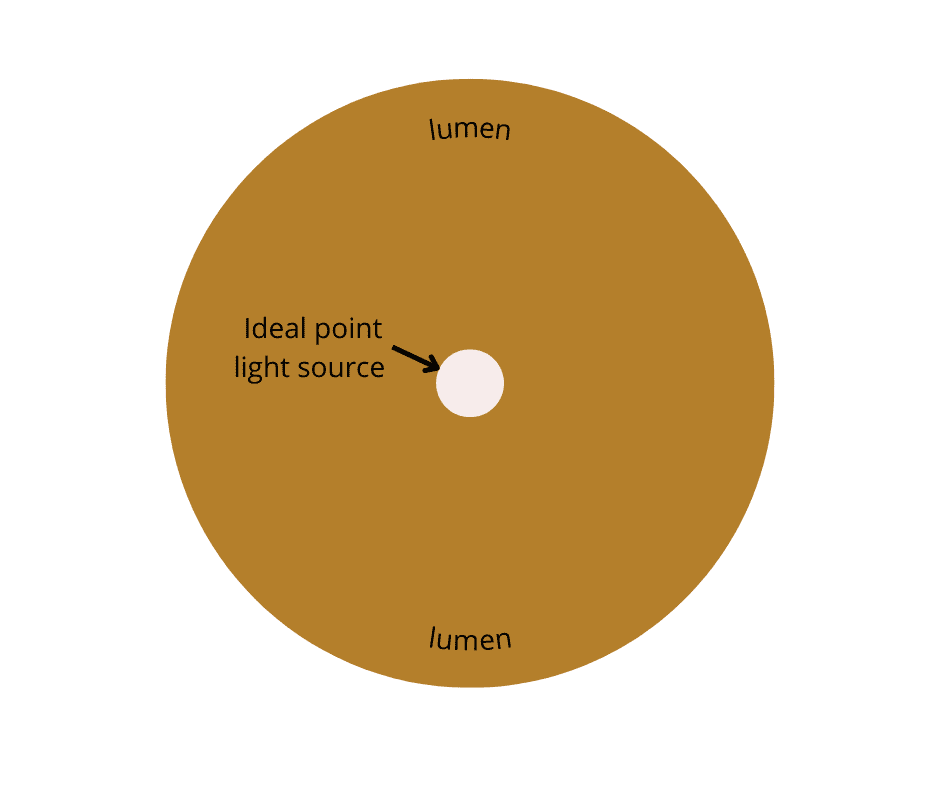
LIGHT DISTRIBUTION
When it comes to the illumination of objects, you have to be aware that each lamp will distribute light differently. For example, LED tubes generate light with a large emission surface, and halogen emits a small point of the light, leading to shadows on the objects and surfaces. LED tubes and halogen lamps distribute almost 360 degrees, but the final effect they cause is different. Lamp manufacturers offer various point-light sources that force light at a specific angle. The beam angle spreads lights very precisely, allowing for illumination of particular areas stronger while leaving their soundings in darkness. This is a crucial factor, especially when choosing task lighting.
DIMMABILITY
The intensity of natural light changes throughout the day. Therefore, artificial light needs to change accordingly. Dimming allows you to change the mood of the area and, at the same time, save energy by supplying only the amount of light you need at the moment. You will need a dimmable light source and lighting control devices to dim the lights. Make sure the lamp is compatible with the device, and if the lamp is not fully compatible with the controls, the lights will not dim properly. If not compatible, you can expect flickering and blackout between some level of dimming and the off level. To avoid that problem, you can consult a lighting designer who designs the lighting and control system. The lighting designer will help you choose the right equipment. Usually, Premium Lighting like WAC, Ketra, and Coastal Source guarantee compatibility with control systems like Lutron, Crestron, and Control4.
THE LAMP PROPERTY STAR
When choosing a lamp, make sure you choose the one that will meet your expectations. Pay attention to its property, luminaires, CRI index, dim capability, and wattage. To make the right decision, you can use below lamp property star.
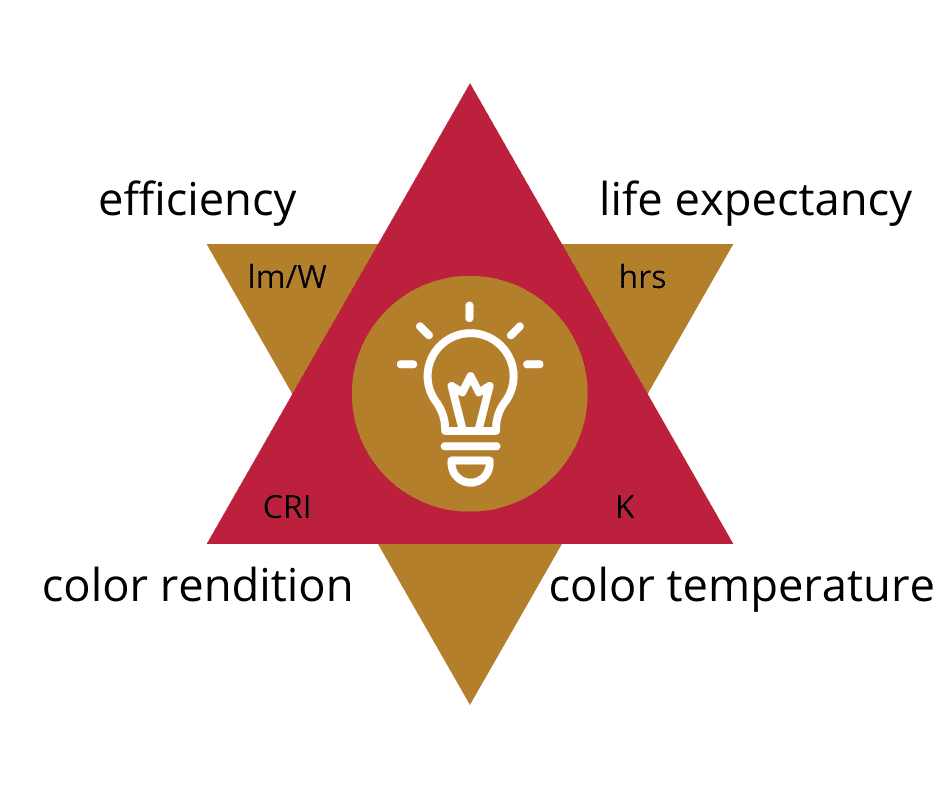
LAMP TYPES
We are living in a time of lighting revolution. The LED has replaced most of the lamps available on the market. Manufacturers are constantly improving technology to deliver the most efficient lighting solution for their customers. The LED manufacturers offer a replacement for most lamp types. You might now think that you should go for LED only, but I will stop you for a moment. As LED is a great solution, we are still living in times of transition. Some LEDs will not do the work we expect from the light source. Therefore, we still have halogens, CFL, ELV, MLV, etc. Try to evaluate the choice or replacement of an LED, and to do so, I will walk you through three main lamp groups and their features.
Incandescent Lamps:
Light is emitted when the thin vacuum-sealed carbon filament in the bulb heats up. A lamp eliminates the glare when a current is applied. The higher the current, the brighter the light emission is. This technology has been improved, and manufacturers have started to use tungsten metal (known as wolfram) and halogen. Performance of the lamp improved, and production was relatively cheap; the product spread quickly worldwide. Unfortunately, this type of space illumination is not as efficient as it should be; less than 5 % of the energy input is transformed into light, and the rest transforms into heat.
Metal Halide Lamps:
Light is generated by creating an electric arc. Two electrodes and a mixture of metal halides are contained under high pressure. This technology prevents heat loss and often controls the emission of UV. There are two significant disadvantages of this solution;
– the lamp needs time to reach its desired light intensity and to cool down once turned off
– the lamp cannot be dimmed.
But it will work perfectly if you are looking for good color rendition and high efficiency, with a life expectancy of up to 15 000 hours. They are a common choice for public buildings, street lighting, stadium illumination, and the retail sector.
Fluorescent Lamps:
Glass tubes filled with argon and mercury. Cathodes inside the tube emit electrons when put under the current. Vaporized mercury produces UV light. Fluorescent lamps are coated with a phosphor that emits visible light. The CRI is lower than in Incandescent, but the efficiency of this lamp is its great benefit. It can last up to 20 000 hours, and it does not produce heat.
LED
This lamp costs more than any other lamp; however, you will benefit from this investment in the long run. LEDs do not produce heat, last longer than different lamps, and are dimmable. At least, in theory, all LEDs are dimmable, but what determines whether an LED lamp is dimmable or not is the driver. And here, you want to invest more to have the most efficient dimmable capacity. This lamp is very sensitive and tangible when exposed to high currents. If you buy a good driver, the device will deliver the exact amount of energy the lamp needs. But if you decide to save some money on the driver, be prepared to buy a new LED lamp sooner than you expected. Without good heat management, LEDs will last a short time.
The types I described above are only a few of all available solutions. I just wanted to briefly explain that technology used in lamps will affect your light efficiency,
DECISION
Deciding on the right lamp might be difficult if you want to ensure it will perfectly serve its purpose. Choosing lighting for new construction or renovation is easier because you do not have to think about existing equipment. While looking for the lamp for a retrofit, consider existing fixtures, read instructions on the light, and pick the most efficient solution compatible with what you already have. Remember, you can always go for the LED replacement; you need to find the right one.
To ensure you are getting the most of your lighting, think about your light and hire a lighting consultant in the first phase of renovation or construction. You can assure that electrical installation is prepared for your fixture, and you have the right amount of light in each space. When it comes to the retrofit, always check if your old light fixtures can be utilized for the technology and efficiency you want to have. Consult purchase with your electrician, electrical engineer, or lighting designer if you need additional lighting.
Patrycja Glod
Lighting Design Engineer
Reading Time: 6 min 2 sec

